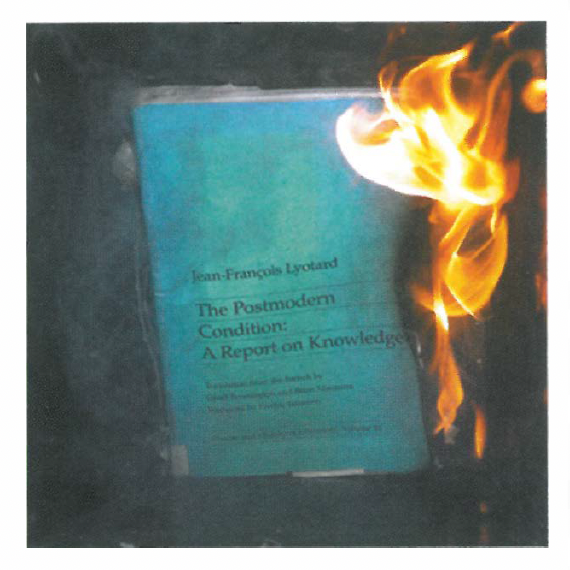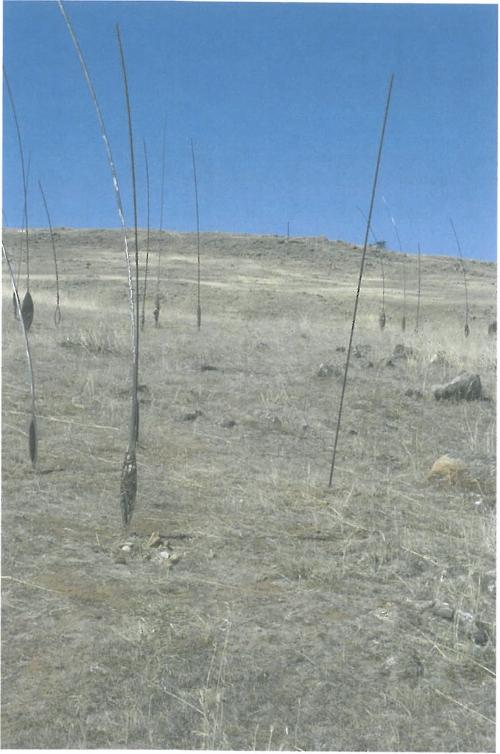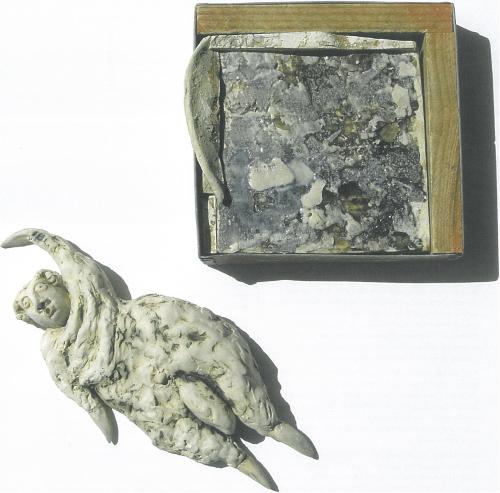
'You can have one of these.' Mark Siebert hands me a tiny zippered plastic bag inside which is a whitish-grey powder. It is a dose of the Salvador Dali book he has been grating. He is selling them for $10 each. I would rather have Matisse but there is only Dali today. What is not neatly collected in bags is cut into lines on a mirror box like cocaine waiting to be snorted. Art as a drug.
Siebert's artwork; watercolours and drawings, is usually about what he likes, mostly a band called The White Stripes, their song lyrics and stories about them. But in response to the recent radical and shameful bulk de-accessioning of library books from the University of South Australia where he was, until recently, a student, Siebert began making paintings and photographs of some of his favourite books and videos, recording their shapes and colours, making simple portraits of these highly disposable pieces of culture.
The works in Out of Circulation follow the portrait works in depicting books, but most of them have been selected not as favourites but instead as texts frequently used in art theory to explain, justify, bolster and expand contemporary artworks. The artist, who admits he has had trouble reading or understanding these books, bypasses an engagement with their intellectual content to treat them primarily as material objects and, humorously, to abuse them. The six works are digital prints with the high finish of glossy colour photographs.
The first book appears to be covered with a sparkling clear jelly until you realise it is in the process of being flushed down the toilet. It is a copy of The Transparency of Evil by Jean Baudrillard and the clarity of the water surrounding it and the sparkling porcelain bowl, a tribute to the high standards of cleanliness at the Experimental Art Foundation where the photograph was taken, do indeed emphasise transparency.
The book is a fertile resource and raw material for artwork. From Joseph Kosuth to Hossein Valamanesh, Tim Rollins to Simryn Gill, Shaun Gladwell to Maslen & Mehra, books have often been used by contemporary artists as eloquent surfaces, evocative objects and subtle tools for talking about culture. The use of the book as a raw material is especially strong because it goes against the taboo that we learn when we are very young of respecting books. Yet the book as a form is threatened today and the de-accessioning of libraries is a contemporary scandal of short-sighted expediency. American author Nicholson Baker in his 2001 book Double Fold: Libraries and the Assault on Paper describes his quest to save old books and in particular old newspapers from the British Library (www.oldpapers.org).
Siebert's use of books is very simple and shocking. Good for a laugh, it demonstrates that we still see books as sacred and somehow eternal. What is funny about the deadpan depiction of the writings of Lacan in a saucepan of boiling water on top of a stove, the burial of Derrida's Of Grammatology in a shallow hole in the lawn, the consumption by flames of Lyotard's The Postmodern Condition? The last destruction takes place over four frames. This is a slick cartoon-like approach to making a statement – a kind of revenge of the philistine. The other two works in the series Untitled (Grate), the Dali and Untitled (Saw), a book on Picasso sawn in half, encompass earlier art heroes. There is an element here of the stereotype of the 'stupid painter', or the 'visual person' who hates to read, the legendary art student who must keep sitting their art history slide test for decades because they can't remember the necessary iconic works of art. Yet the serious side of this book abuse is a valid comment on the superficiality of artworks which are essentially illustrations to theory.












